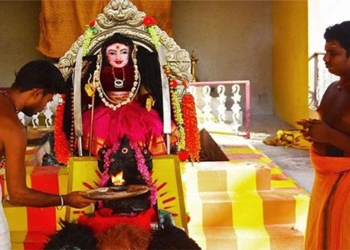During the medieval period, in many Russian communities, particularly in the regions of Novgorod and Pskov, people firmly believed that building temples could help them cope with disasters and epidemics that were spreading at the time. Thus, the one-day temples known as obydennye khramy began to emerge.
The reason they are called one-day temples is that the construction takes only one day, typically carried out by a community working together, featuring simple designs and relatively small scales. Construction usually begins at night and is completed before sunset the following day. The workers must ensure that as night falls, the church is consecrated. This act is a dedication of the church to God, and it is used solely for worship.
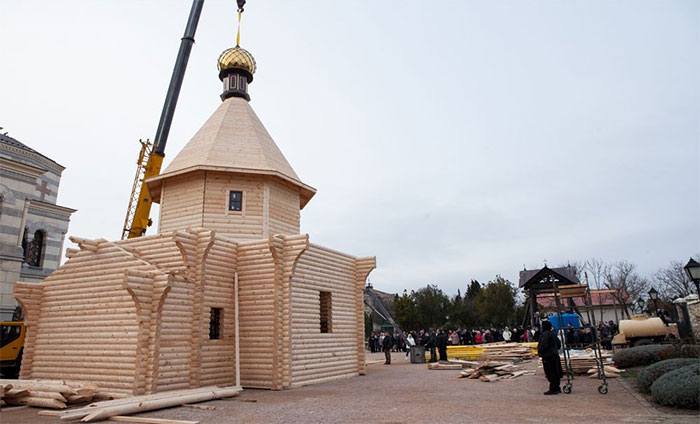
The one-day temple built in Chersonesus near Sevastopol, Crimea in 2015 to preserve ancient traditions.
The first recorded instance of a one-day temple was in 1390, in a village in Novgorod, where the locals erected a small wooden church to combat the Black Death, which was ravaging Europe at the time. According to the Novgorod Chronicle, “On Wednesday, the local farmers came together to build a church. They brought wood from the forest and constructed it under the supervision of the bishop, completing the project in just one day. After it was built, the church was consecrated by the bishop and the bishops on the same day and was used for worship immediately.” Strangely, shortly after, the plague subsided, further convincing the people of the efficacy of this action.
Throughout the 15th century and the first half of the 16th century, one-day churches increasingly appeared in the Pskov and Novgorod regions. Almost all of these churches were related to epidemics threatening the community. In most cases, these diseases were the plague and pneumonic plague. Notably, at least two churches in Pskov were built in 1522 to combat the mysterious sweating sickness in England, also known as “English sweat,” a disease with a very high mortality rate. A decade later, a smallpox outbreak in Novgorod and Pskov led to an increase in the number of one-day temples in both cities.
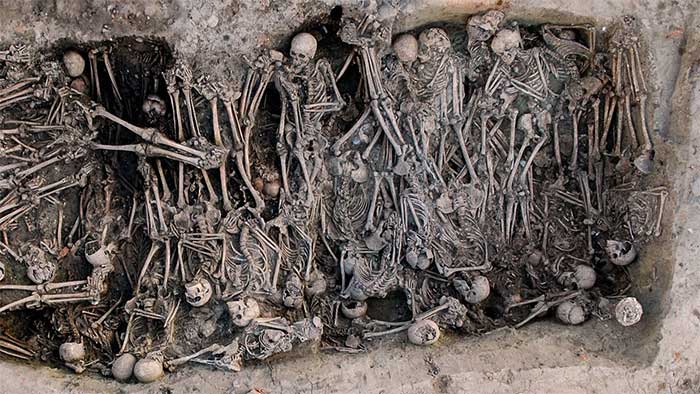
Corpses piled on the streets, a grave containing dozens of bodies.
The decision to build a one-day church was typically made by the community. However, sometimes it was ordered by the Tsar or high-ranking officials. For example, in 1522, after the construction of a one-day church dedicated to Saint Varlam Khutynskii failed to halt the plague in Pskov, Grand Duke Vasilii III ordered the construction of a second one-day church in honor of the Virgin Mary, using his own funds. By 1532, when the city of Pskov was struggling with a smallpox pandemic, the Grand Prince used his own money to build a church dedicated to the Archangel Gabriel.
The last recorded one-day church was built in 1654 in Vologda. At that time, a severe epidemic had erupted across Central Russia, killing thousands. Some records indicate that corpses were piled in the streets, with graves containing dozens of bodies. Many unfortunate individuals had their bodies left unburied, and their remains were torn apart by animals. By August of that year, the disease spread to Vologda, and the death rate significantly increased, with many dying just hours after infection. Out of fear and despair, many turned their hopes to the divine, praying, fasting, and conducting rituals, but to no avail. They then vowed to build a church dedicated to the Savior, promising to complete it in just 24 hours.
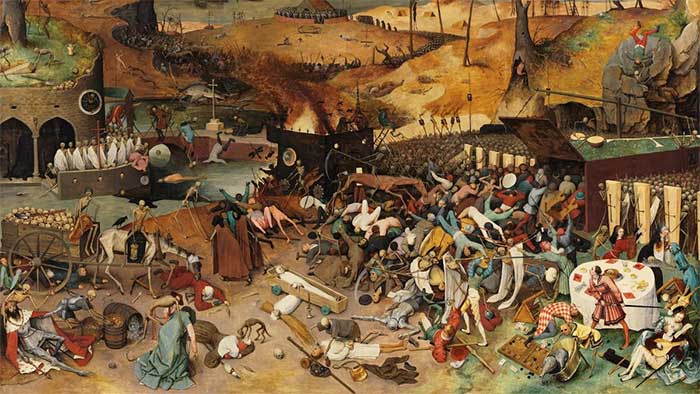
The epidemic had weakened by the time the people began constructing this church.
On October 18, 1654, at exactly 1 AM, the first foundation stone of the church was laid, and the people worked continuously to finish just in time. Except for some interior statues that were still incomplete, some statues had to be borrowed from nearby churches to conduct the consecration ceremony. Records also indicate that the completion of the church positively influenced the situation. However, later researchers pointed out that the epidemic had already weakened by the time the people began building this church. Due to the location of Vologda in the north and the cold weather at that time, the spread of the disease was hindered, as the plague bacteria are very sensitive to temperature changes.
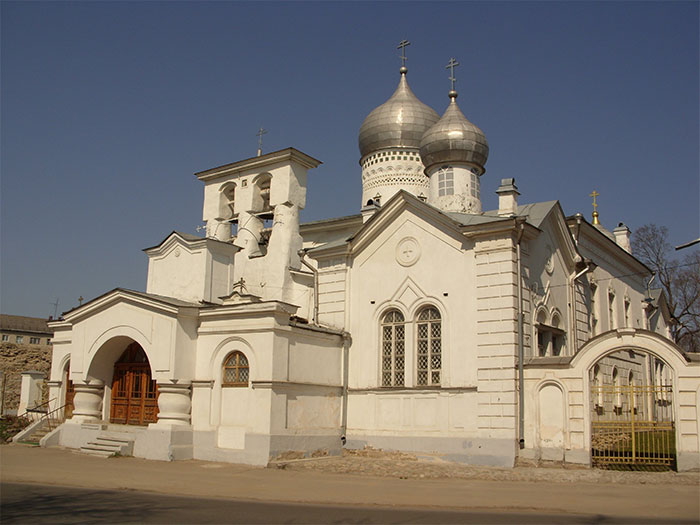
St. Varlaam Church in Pskov was built during a plague in 1466 and was later renovated with stone in 1495.
As life progressed and medicine advanced, measures against the plague emerged, and the tradition of building one-day churches gradually disappeared. In some places, this tradition was only retained for preventing and combating diseases in livestock.
Most one-day churches were made of wood and could not last more than 40-50 years. Therefore, there are currently no ancient obydennye khramy that have survived to this day. However, many churches were later renovated with stone and have been preserved to this day, including the Spaso-Vsegradsky Church in Vologda, built in 1654 and renovated with stone 30 years later.









































